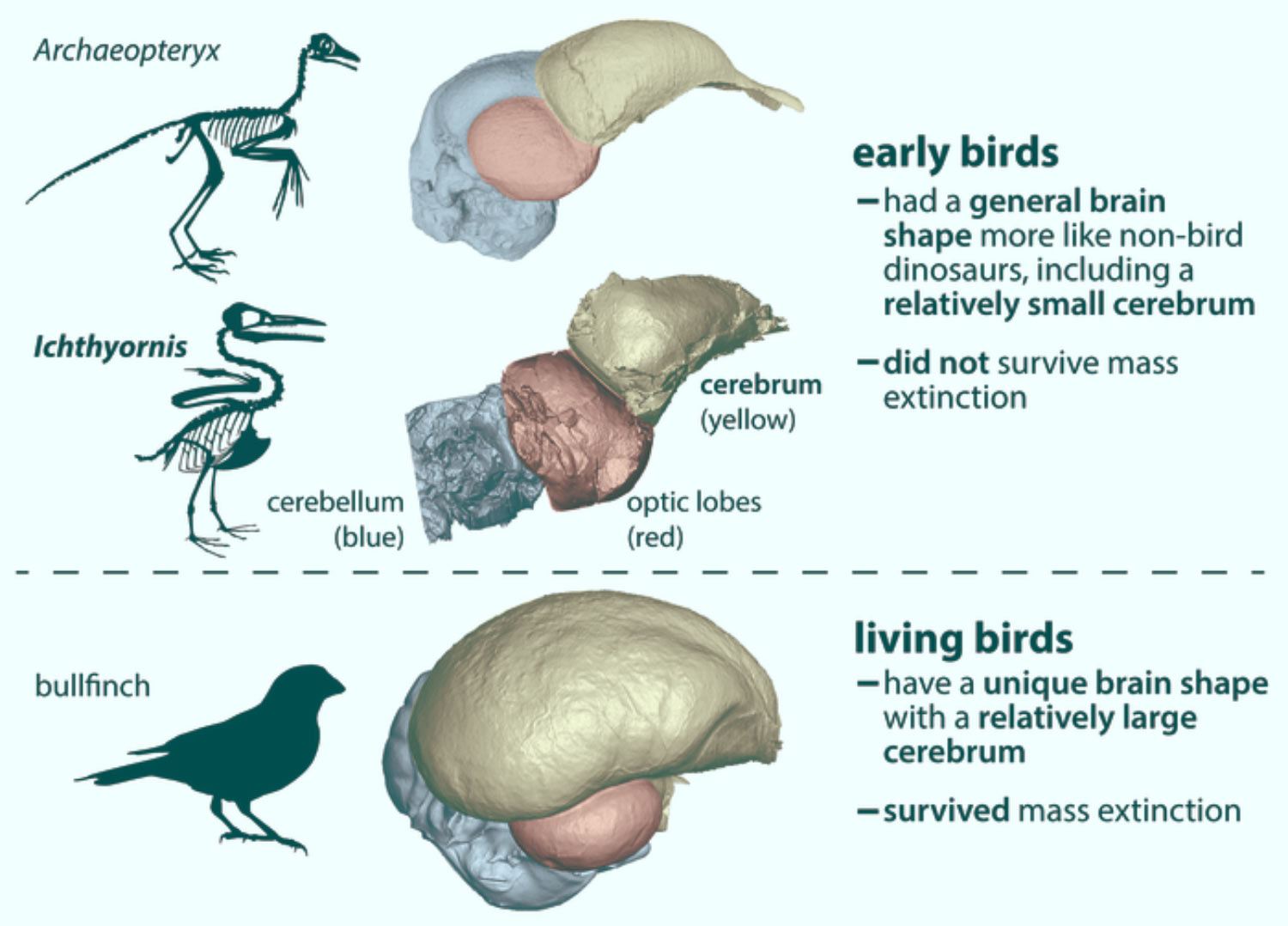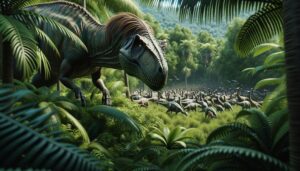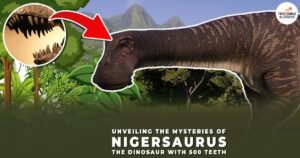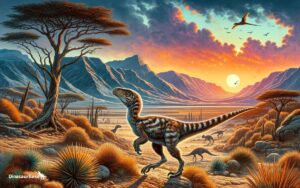What Dinosaur Looks Like a Bird? Uncover Avian Ancestors!
The Archaeopteryx dinosaur closely resembles a bird. It had feathers, wings, and a beak-like snout.
Dinosaurs have captivated our imaginations for generations, and the discovery of bird-like dinosaurs like Archaeopteryx has transformed our understanding of the connection between dinosaurs and modern birds. Originating from the late Jurassic period, Archaeopteryx serves as a critical link demonstrating the evolutionary transition from non-avian dinosaurs to birds.
This fascinating creature had a blend of reptilian features, such as a long, bony tail, combined with avian characteristics including wings and the ability to potentially glide or fly. Its fossils, many found in Germany, have played a pivotal role in piecing together the story of how today’s birds descended from these ancient creatures. The similarities Archaeopteryx shares with both birds and dinosaurs make it an enticing subject for paleontologists and enthusiasts alike. Its existence underscores the complex and intriguing tale of life on Earth, evolution, and natural history.

Tracing The Evolutionary Connection
Fascination with dinosaurs often leads us to wonder about their lives—and their extinction. One of the most profound discoveries in paleontology is the bird-dinosaur connection. This article explores the evolutionary link that ties our modern avian friends to ancient, reptilian behemoths.
Shared Features Between Birds And Dinosaurs
Birds share striking features with their dinosaur ancestors. These features tell a story of evolution that transformed scales into feathers and beasts into birds.
- Feathers: Both birds and certain dinosaurs have them.
- Fused Clavicles: The wishbone is a shared characteristic.
- Laying Eggs: Birds and many dinosaurs lay shelled eggs.
- Hollow Bones: This feature contributes to a bird’s ability to fly and was present in many dinosaurs for agility.
The Fossil Evidence Linking Birds To Dinosaurs
The fossil records provide concrete evidence linking birds to dinosaurs. Discoveries like Archaeopteryx reveal a blend of reptilian and avian features. Let’s look at some solid fossil evidence:
| Fossil | Features | Impact |
|---|---|---|
| Archaeopteryx | Feathers, teeth, three-fingered hand | Known as the ‘first bird’, showcasing a mix of bird and dinosaur traits |
| Velociraptor | Quill knobs (attachment for feathers) | Provided evidence of feathered dinosaurs that did not fly |
| Deinonychus | Bird-like posture and claws | Reinforced the dinosaur-bird evolutionary link |
The Archaeopteryx: A Historical Discovery
The discovery of Archaeopteryx stunned the world. This ancient creature, sometimes called the first bird, serves as a key piece in the evolutionary puzzle. Found in the 19th century, it bridges the gap between feathered dinosaurs and modern birds. Scientists study Archaeopteryx to learn about dinosaur and bird evolution.
Unveiling The First Bird-like Dinosaur Fossil
Archaeopteryx fossils emerged near Solnhofen, Germany. Discovered in 1861, just two years after Darwin’s “On the Origin of Species,” its timing was perfect. It became a symbol of evolution. The fossil’s blend of both bird and dinosaur features was unique, and it had traits that were crucial for the ability to fly. Its importance to science is immense.
Physical Characteristics Of Archaeopteryx
- Feathers: Similar to modern birds, indicating potential for flight.
- Wings: Possessed wings with flight feathers.
- Tail: Long and feathered, different from modern birds.
- Teeth: Sharp teeth in its beak, like dinosaurs.
- Claws: Three-fingered forelimbs with claws.
- Bones: Hollow bones, aiding in flight.
This extraordinary creature provides evidence that some dinosaurs evolved into the birds we see today. Its mix of features clearly shows the link between theropod dinosaurs and birds. Understanding Archaeopteryx helps us understand the evolution of flight in birds.
Modern Birds: Living Dinosaurs Among Us
Many birds we see today are like dinosaurs. They are their living relatives. Some birds even look like dinosaurs from long ago. These similarities are not just a coincidence. They tell us a story about life millions of years ago.
Analysing The Anatomical Similarities
Birds have features very much like dinosaurs. Let’s explore these details:
- Feathers: Just like many dinosaurs, birds have feathers. They come in all shapes and sizes.
- Bones: Birds have light, hollow bones. Some dinosaurs had similar bones.
- Beaks: Birds use beaks to eat. Beak-like mouths were also common in some dinosaurs.
Evolutionary Traits From Dinosaurs To Birds
Birds did not come from nowhere. They have changed a lot from their dinosaur ancestors. Here are some traits they keep from long ago:
- Laying Eggs: Both lay eggs. Birds’ eggs are much like those of dinosaurs.
- Social Behavior: Many birds live in groups. Dinosaurs likely did the same.
- Vocal Communication: Birds chirp and call. Dinosaurs might have made sounds to talk to each other too.

Credit: www.nationalgeographic.com
Theropod Dinosaurs And The Origin Of Flight
Curiosity soars high as we peek into the prehistoric skies. Theropod dinosaurs stand out in history’s tapestry with hints of wings. They bridge the gap between the giants we imagine and the birds we see today. These creatures offer clues to the origin of flight, a jumpstart in the story of evolution.
The Role Of Feathered Dinosaurs
Feathers may not always mean flight. Early theropods sported feathers but did not fly. These features served for warmth and possibly display. As time passed, some theropods developed refined feathers on their arms and tails. These adaptations suggest a gradual shift from simple plumage to wings fit for flight.
- Insulation to keep warm
- Colorful displays for communication
- Evolution from fuzzy coats to aerodynamic feathers
How Flight Might Have Evolved
Flight didn’t happen overnight. It went through trials and changes. Feathered theropods leap from the ground up. They wished to catch prey or avoid predators. Small steps in nature led to the big leap into the sky.
| Step | Feature | Function |
|---|---|---|
| 1 | Longer Arms | Reaching and gliding |
| 2 | Feathered Limbs | Controlled descent |
| 3 | Rigid Tail | Better balance |
| 4 | Hollow Bones | Lighter body |
| 5 | Wishbone | Strength for wing flaps |
These simple changes set the stage for birds to take to the skies. With each generation, improvements in design and function helped our feathered friends soar. The descendants of those dinosaurs still fly above us, a testament to the power of evolution.
Contemporary Discoveries And Research
The quest to understand dinosaurs has never been more exciting. Birds are dinosaurs’ closest living relatives. Recent studies provide compelling evidence of this connection. These efforts offer a fresh look at how some dinosaurs may have appeared and behaved much like today’s birds.
Recent Fossil Discoveries Shedding New Light
New fossils unearthed around the world have revealed incredible details. Spectacular feathered dinosaurs have come to light from ancient rocks. Each fossil offers clues about the bird-like appearance of these prehistoric creatures.
- Anchiornis Huxleyi: Found in China, sporting feathers and wings akin to birds.
- Yi Qi: Another Chinese find, with bat-like wings suggesting diverse flying methods.
- Dakotaraptor: A North American discovery with feathers, hinting at agile hunting behavior.
Impact Of Technological Advances On Understanding
The latest tech plays a vital role in paleontology. CT scans, 3D modeling, and isotopic analysis have transformed how scientists view dinosaurs’ bird-like features.
| Technology | Application | Outcome |
|---|---|---|
| CT Scanning | Visualizing internal structures | Details of bird-like air sacs in fossils |
| Laser-Stimulated Fluorescence | Identifying soft tissue | Insight into feather placement and structure |
| Microscopy | Examining feather fragments | Information on coloration and feather strength |
New tech unveils secrets locked in million-year-old fossils. They provide a clearer picture of dinosaur biology. With every discovery, similarities with birds grow more evident. These findings underpin the transformative view of dinosaurs not as sluggish beasts, but as dynamic, bird-like animals.

Credit: www.birdlife.org
Implications Of Dinosaur And Bird Evolution
Implications of Dinosaur and Bird Evolution weave a fascinating story of ancestral connections. This evolution reveals remarkable insights into the creatures that once roamed our planet and those that flitter across our skies today. One dinosaur that bore striking similarities to birds was the Archaeopteryx. With feathers, wings, and a beak-like snout, it stands as a testament to these ancient links.
Insights On Extinction And Survival
The transition from dinosaurs to birds marks one of the most significant evolutionary leaps in our planet’s history. It begs questions about why some species survive while others fade into oblivion.
- Size and metabolic rate may have determined survival.
- Smaller, feathered dinosaurs adapted to changing climates.
- Adaptability led to the birth of present-day birds.
Archaeopteryx, and similar species, highlight critical survival traits. These include feathers for temperature control and flight, laying the groundwork for avian species’ success.
The Significance For Avian Conservation Efforts
The lineage from dinosaurs to birds adds a critical dimension to conservation efforts. Understanding the evolutionary pressures that shaped modern birds can help in developing strategies to protect them.
| Evolutionary Insight | Conservation Application |
|---|---|
| Feather Adaptation | Habitat Management |
| Flight Mechanics | Airspace Protection |
| Nesting Behaviors | Nest Site Preservation |
Emphasizing habitats that mimic ancient environments can boost conservation efforts. It ensures that bird species thrive, echoing their ancient ancestors’ resilience and adaptability.

Credit: australian.museum
Frequently Asked Questions Of What Dinosaur Looks Like A Bird
What Dinosaurs Looked Like Birds?
Dinosaurs resembling birds include the Velociraptor and Archaeopteryx. They had feathers and body structures comparable to modern birds.
What Is The Dinosaur Looking Bird Called?
The dinosaur-looking bird is often referred to as the Shoebill, or Balaeniceps rex. Its prehistoric appearance resembles that of extinct theropod dinosaurs.
What Is The Bird Dinosaur Called?
The bird dinosaur is commonly called Archaeopteryx. It represents a key evolutionary link between feathered dinosaurs and modern birds.
What Is The Closest Dinosaur To Birds?
The Velociraptor genus shares a close evolutionary relationship with modern birds, with recent discoveries indicating Archaeopteryx as another close relative.
Conclusion
The fascinating link between dinosaurs and birds is epitomized in creatures like Archaeopteryx. This ancient species unveils the evolutionary journey from mighty lizards to feathered fliers. Remember, each fossil discovery sheds light on this incredible transformation. Dive deeper into prehistoric times to appreciate these remarkable connections.
Delving into paleontology reveals nature’s incredible narratives.




